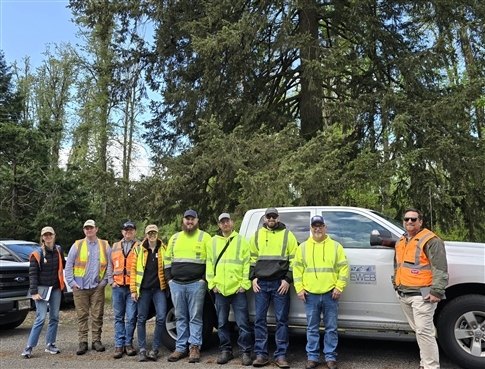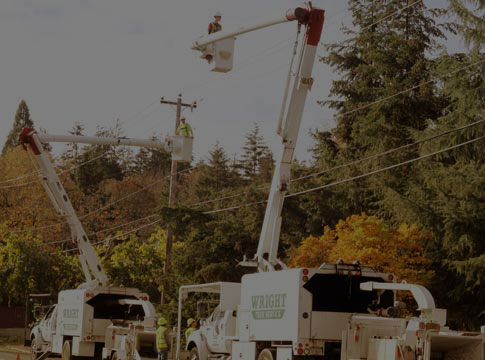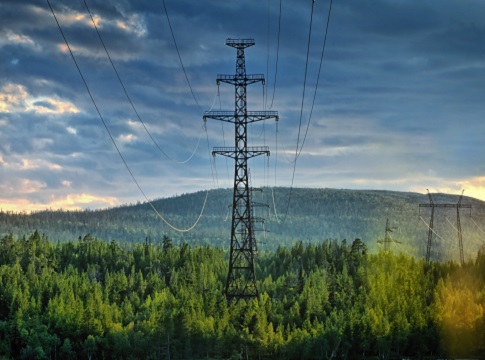Related News
Related News
-
EWEB reaffirms commitment to resilience with Wildfire Mitigation Plan approval
The utility is testing new equipment, leveraging technology, and incorporating third-party expertise to bolster electric system resiliency to a range of threats, including wildfire.
Find Out More -
Energy conservation could offset large portion of growth in power demand
Preliminary results of an EWEB study indicate that cutting back demand can contribute to maintaining a reliable, affordable energy supply.
Find Out More -
Groups suing EWEB will burden customers with litigation-driven costs
EWEB expresses disappointment that groups choose court over collaboration and firmly disputes the claims made in the lawsuit relating to operation of the utility’s Carmen-Smith Hydroelectric Project nearly 70 miles east of Eugene. EWEB takes its environmental and public safety responsibilities seriously. Contrary to the assertions in the lawsuit, construction of fish passage was postponed because EWEB’s regulator, the Federal Energy Regulatory Commission (FERC), required the utility to study and resolve urgent dam safety issues first.
Find Out More -
Rising Together: Female operation staffers begin industry mentorship program
One week into Women's History Month and just before International Women's Day on March 8, three women in EWEB leadership roles embarked on a 10-month-long journey of mentorship, fellowship, and professional development.
Find Out More -
EWEB and BRING cook up new ways to help Eugene businesses save energy
Businesses can cut energy costs with EWEB’s free Energy Assessments and efficiency programs. Plus, for a limited time, BRING is offering $1,000 rebates for qualifying upgrades—apply by Feb. 28!
Find Out More -
EWEB Board Adopts 2025 Goals
Goals focus on supporting low-income community members and renters, while improving operational efficiency.
Find Out More -
PNW Lineman Rodeo raises $85,000 for Oregon Burn Center
EWEB line techs are proud partners and participants in the rodeo fundraiser every year.
Find Out More -
Eugene residents share energy and water saving tips
From blocking a draft to replacing your heating system, each action you take can save water and electricity.
Find Out More -
Energy demand reaches highest level in nearly a decade as utility prepares for ice
Frigid temperatures in the low 20s caused surging electricity demand in early February.
Find Out More -
Frigid weather drives highest energy demand of the winter so far
Peak electricity demand this season surpasses demand levels during last year’s ice storm.
Find Out More -
Cold Weather, Higher Energy Bills: Why It Happens
Eugene is experiencing some of the coldest temperatures we've seen this winter. When temperatures drop into the 20s, heating systems must work much harder to keep homes warm. Even if you leave your thermostat untouched, your heating system will consume more energy to maintain a steady indoor temperature as the outdoor temperature plummets.
Find Out More -
Recovery still ongoing on the anniversary of the 2024 Ice Storm
Cost of rebuilding EWEB's electrical system will surpass $11 million
Find Out More -
EWEB awarded $1 million for wildfire resiliency projects from Federal funding package
Funds will be used to support fuels reduction work on a landscape scale in high-risk areas in the McKenzie River Valley and Eugene South Hills.
Find Out More -
Your Rates at Work: Investing Today for a Resilient Tomorrow
For more than a century, EWEB has planned, built, and maintained the systems that deliver safe, reliable, and environmentally responsible power and water to Eugene homes and businesses.
Find Out More -
EWEB hires firm behind decommissioning Klamath dams for Leaburg support
EWEB selects McMillen, Inc. to lead Leaburg project decommissioning, pointing to firm’s experience keeping nation’s largest-ever decommissioning project on-time and under budget.
Find Out More - Show More
EWEB invests in satellite-based forestry analytics for vegetation management
May 30, 2024 • By Robyn Smith, EWEB Communications

Vegetation management is an essential tool in EWEB's power outage mitigation toolbox.
As we witnessed during the back-to-back ice storms in January, hazardous falling trees and snapped branches coming down on power lines create prolonged outages and unsafe working conditions during severe weather events.
That’s why, each year, crews trim over 500 overhead 'line miles' of vegetation to minimize falling trees and branches, avoid outages and increase the electric system's reliability.
EWEB maintains over 1,300 miles of overhead transmission and distribution lines. To aid crews in identifying hazardous vegetation growth in a sometimes heavily forested service territory, EWEB is utilizing a new satellite-based forestry analytics software called Overstory.
"Using remote sensing data, we help utilities optimize resources, mitigate risk, and strategically direct the vegetation management that matters most," said Overstory Customer Success Manager Kathryn Morse.
The first year's analysis (conducted in the fall of 2023) focused on areas with denser tree coverage, like south Eugene and McKenzie River service areas. The satellite imagery captures overhead power lines with nearby tree canopies and uses technology to quickly identify areas that could benefit from additional vegetation management. It also creates a heat map of places with high tree mortality—these 'hazard' trees are more likely to fall into powerlines during severe weather.
EWEB's Resiliency Program Manager Jeannine Parisi said, "The goal is to efficiently target tree-trimming in areas of highest risk and develop an action plan to address hazard trees that pose a fall-in risk to our overhead lines. It's especially helpful for terrain that's hard to access for visual inspection."

How the vegetation intelligence works:
- It creates vegetation data from remote sensing sources (detects tree height, health, and species).
- It combines data that matters most for EWEB (pole and line location, wildfire risk maps, trim specifications, terrain, and slope maps).
- It helps build a data-driven vegetation management program (management cycle prioritization, hazard trees, encroachment, reliability forecasts, and contractor audits).

In May, the Overstory team joined EWEB's vegetation crew in the field to review the first-year data analysis. In the field, the team easily located some of the riskiest areas.
"By looking at our risk matrix, utilities can identify the amount of vegetation nearby, both horizontally and vertically, to conductors, which helps us accurately project vegetation-related outages," said Morse.

Last year, Overstory satellite imaging analyzed vegetation across 180 ‘line miles' and found that EWEB's current vegetation management practices are very effective at maintaining clearance, with just a few areas that might need additional trimming work.
"We just captured new satellite imagery to update the analysis, particularly given the amount of tree damage from the ice storm," said Parisi. Overstory will analyze about 425 ‘line miles' of EWEB's electric system this year.
This forward-thinking vegetation management tool is just one example of how EWEB proactively invests today to prepare for a resilient tomorrow.
Related Programs
Trees are a major cause of power outages in the Eugene area. To help prevent tree-related outages we proactively prune trees to help keep our equipment clear.



